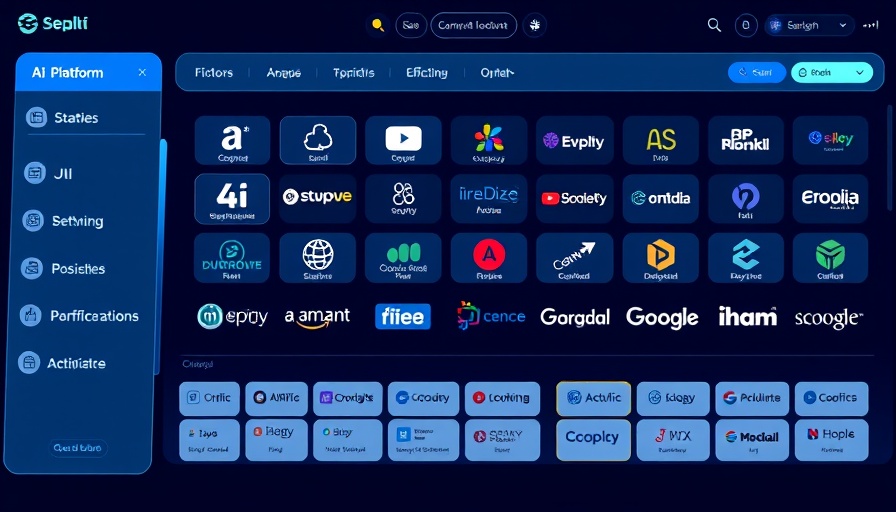
Understanding Print Security: A Growing Concern for Small Businesses
In the digital age, even traditional office equipment, such as printers, have evolved into complex networks of connectivity that expose small businesses to significant security risks. A recent report by HP Wolf Security titled Securing the Print Estate illustrates the challenges that small business owners face in safeguarding their print environments. Highlighting the results of a survey involving over 800 IT and security decision-makers, this report reveals that print security is often overlooked in comprehensive cybersecurity strategies, potentially inviting vulnerabilities that can imperil sensitive data.
Key Insights: The Disconnect in Security Management
The HP report indicates that only 36% of IT decision-makers perform firmware updates in a timely manner, despite an average spending of 3.5 hours monthly managing printer security. This lag in updates is particularly alarming given that printers are increasingly viewed as smart devices capable of housing confidential data. Steve Inch from HP underscores this risk, noting that a compromised printer could lead cybercriminals to harvest valuable business information for various nefarious purposes.
The Lifecycle Risks of Printer Management
The lifecycle of a printer encompasses several stages where security gaps can develop:
- Supplier Selection & Onboarding: An unsettling 60% of decision-makers reported a lack of collaboration between procurement, IT, and security teams, which complicates the establishment of effective printer security standards. Businesses often risk integrating insecure devices into their networks.
- Ongoing Management: Small businesses, under resource constraints, may struggle to manage all aspects of security adequately. The reported 3.5 hours per month required per printer can be burdensome for organizations trying to balance efficiency and security.
- Remediation: Recognizing threats is essential; unfortunately, only 35% of IT decision-makers identify vulnerable printers based on updated hardware or firmware risks. Additionally, a disconcerting 70% express concerns about offline threats, emphasizing that risks traverse both digital and physical domains.
- Decommissioning and Second Life: Data security challenges prevent 86% of IT decision-makers from reusing or recycling old printers safely, with many unsure if their current data-wiping methods are effective. This uncertainty can inadvertently escalate operational costs as companies resort to physical destruction of outdated devices.
Strategies for Enhanced Cyber Resilience
By understanding and addressing the risks associated with printer vulnerabilities, small business owners can implement strategies to fortify their defenses:
- Team Collaboration: Enlist members from procurement, IT, and security in the selection and onboarding phases. This collaboration aids in defining stringent security protocols that reduce the likelihood of introducing insecure printers into the network.
- Proactive Firmware Management: Commit to timely firmware updates to mitigate known vulnerabilities. IT teams need to prioritize developing routines that incorporate consistent security checks into day-to-day operations.
- Education and Training: Regularly train staff on the importance of print security and how they can contribute to safeguarding sensitive information. Encouraging a security-first mindset can significantly reduce vulnerability.
- Utilize Third-Party Experts: Consider hiring outsourced Chief Marketing Officers or cybersecurity specialists to lead efforts in improving overall security frameworks without the overhead associated with full-time hires.
Conclusion: Taking Action Against Printers’ Security Risks
Given the landscape of growing risks, small business owners must take decisive action to bolster their printer security. By fostering collaboration among teams, prioritizing firmware updates, and leveraging external expertise, businesses can mitigate vulnerabilities that extend beyond traditional IT security measures. This is not solely about protecting physical devices; it is about safeguarding the integrity of business operations in an increasingly interconnected world. Want to see how this integrated approach can work for your business? Consider consulting with an outsourced CMO to kickstart your journey towards a more secure operational environment.
 Add Row
Add Row  Add
Add 




Write A Comment